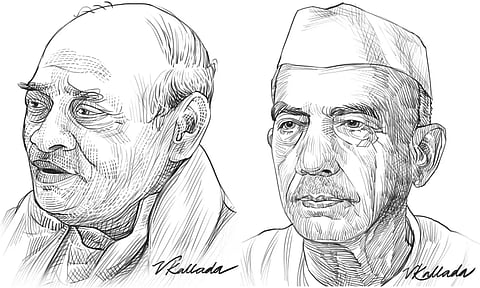

CHENNAI: PV Narasimha Rao’s legacy as the father of economic reforms ushered India into an era of globalisation, liberalisation and privatisation and set the stage for the nation’s future growth, Charan Singh was regarded as a ‘champion of peasants’ and was behind historic legislation for zamindari abolition and land ceiling.
PV NARASIMHA RAO
P V Narasimha Rao was often referred to as the Chanakya of Indian politics, the prime minister known for initiating far-reaching economic reforms and also for his skilful political manoeuvring.
He was the first prime minister from the south, the first Congress leader from outside the Nehru-Gandhi family to complete a full five-year term and the man who steered India through the turbulent early 1990s.
His five-year rule saw the Babri Masjid demolition, the rise of the saffron forces and also the country being placed firmly on a new economic path, away from the Nehru years of public sector socialism.
He had the dubious distinction of being the first PM to face criminal charges and accusations.
His economic reforms agenda primarily focused on ‘liberalisation, privatisation, globalisation’, often referred to as LPG.
The Rao-Manmohan Singh duo is credited with pulling back the country from the economic brink it was facing at the height of a severe foreign exchange crisis.
However, one of the most important events that marked his rule was the demolition of the disputed structure at Ayodhya in December 1992 and the nationwide communal riots that followed. The multiple scams made his government unpopular, leading to the defeat of the Congress in the May 1996 Lok Sabha polls. After Sonia Gandhi took over the party reins he did not contest Lok Sabha polls.
Thereafter, Rao was back to what he did best – writing. He came out with a semi-autobiographical tome “The Insider”, released by another ex-PM Atal Bihari Vajpayee.
Later as Prime Minister, ‘the consensus man’ implemented V P Singh’s pet project, the Mandal Commission report. Rao’s prime ministership also marked an upswing in Indo-US relations after a summit meeting with the Bill Clinton in Washington in 1994.
CHARAN SINGH
Chaudhary Charan Singh, who on Friday was conferred with India’s highest civilian award Bharat Ratna, is popularly known as a champion of farmers. Opposed to the country’s first prime minister Jawaharlal Nehru’s socialist economy, he advocated ownership rights to the farmers.
Though Singh was a Congress follower in the beginning of his political career, he quit the party in the 1960s and went on to form the first non-Congress government not just in Uttar Pradesh but entire north India.
In his long political career, Singh briefly served as the sixth prime minister and was twice the chief minister of Uttar Pradesh. He was sentenced to jail several times for taking part in the freedom movement. Besides the freedom movement, Singh was also active in politics in the United Provinces before Independence.
Singh is known for piloting pro-farmer legislation such as the Consolidation of Holdings Act of 1953 and the Uttar Pradesh Zamindari and Land Reforms Act, 1952. The latter led to the abolition of zamindari system in the state. He was also strict in dealing with the ‘Patwari strike crisis’ in 1953.
He had introduced the Agricultural Produce Marketing Bill in 1938, which was passed in 1964. It helped the farmers in improving the market linkages.
Land reforms resulted in empowering the tillers and providing the landless with ownership of land. It created a conducive atmosphere for the social and economic upliftment of the farmers.
During the drought in 1966-1967, Singh offered the agriculturists a much higher procurement price than the prevailing market rates. The infrastructure he laid down led to the minimum support price (MSP) mechanism.
Singh died on May 29, 1987 at the age of 84 years. His birth anniversary, December 23, is celebrated as Kisan Diwas.